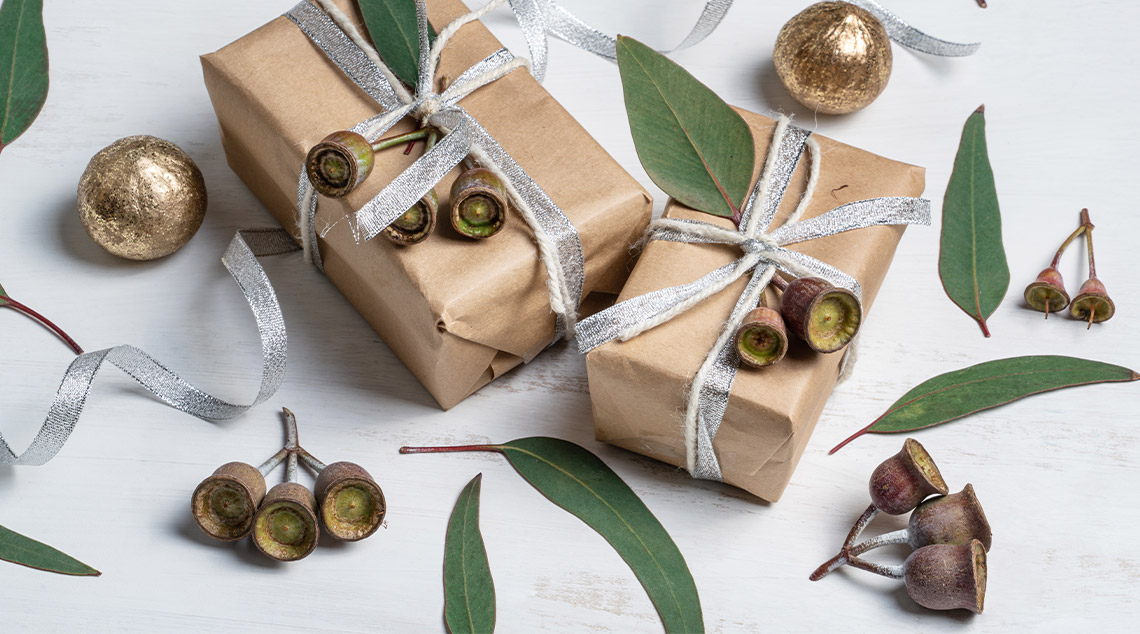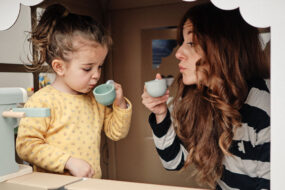Joy to the world: How to make your Christmas planet-friendly
From regifting unused items to making your own twig tree, these green Christmas ideas will help you capture the festive spirit in a sustainable way.
Christmas is the most wonderful time of the year but it’s also one of the most wasteful.
Every year, mountains of unwanted gifts, wrapping paper, packaging and food scraps end up in landfill, with an estimated 30 per cent spike in waste.
So as you deck the halls with boughs of holly this year, why not give back to our great green earth?
By embracing a green Christmas, you can even save yourself the stress of the shopping centre crush. Here is how.
Use alternative Christmas paper
How many bin loads of rubbish do you fill up on Boxing Day?
Research shows Aussies use about 150,000km of wrapping paper every Christmas, and much of it can’t be recycled.
Tamara DiMattina, founder of sustainable living hub The New Joneses, suggests using what you have around the house – “whether it’s brown paper and string, and some greenery from the garden, or recycling last year’s Christmas paper”.
“Newspaper looks really good as wrapping paper too,” Tamara adds.
Another novel idea is to hunt out beautiful preloved tea towels, silk scarves or other materials from op shops.
“You are giving twice, because the money you give to the op shop goes back into the community,” Tamara, who is behind Buy Nothing New Month, says.
Use preloved gifts for Secret Santa presents
Tamara says using a preloved item as a Secret Santa present can be a good way to bond with workmates and provide a conversation starter around values towards giving.
“You could regift unused items around the house (or) find something on Facebook Marketplace or at an op shop … you don’t need to go out and buy something new,” she says.
“The idea is to help people think about what we give and why, and start changing the way we behave.”
Get creative with gift giving
Instead of buying another candle, tube of hand cream or pair of socks, why not think outside the square this year?
Houseplants, vouchers for experiences such as a massage, art class or movie, or a handwritten babysitting credit are some alternatives, Tamara says.
“This isn’t about being stingy – it’s about avoiding being wasteful, and being thoughtful at the same time,” she says.
“You could make something gorgeous that they will have for years or even for life, bake some delicious biscuits or give your loved one an experience that’s good for their health and wellbeing.”
Rethink that new outfit
It feels special to splash out on a glitzy new outfit for the office Christmas party and New Year’s Eve – but do you really need it?
Clean Up Australia chair Pip Kiernan suggests buying preloved instead, “or rent an amazing outfit for that special occasion”.
“Australians buy, on average, 56 new items every year and we each send 23kg of clothing to landfill each year,” Pip says.
Also, consider stepping away from gimmicky Christmas earrings.
Chances are, they will fall apart by New Year’s Eve.
Opt for an eco-friendly Christmas tree
Branch out and make your own sustainable Christmas tree from twigs, twine and LED lights, or dress up a potted plant.
Whatever you do, the important thing is to use what you have, Pip says.
“The most environmentally friendly Christmas tree is one with roots, which can be in a pot in the garden and brought in for next year,” she says.
“If you already own a fake tree, keep using it – don’t throw it out to buy a real one.
“For the environmental footprint of a fake tree to match that of a real one, you need to use it for at least 10 years, and many trees can last much longer if they’re well looked after.”
She says fresh is best when it comes to Christmas trees but if you opt for a fake version, consider a second-hand one.
Carefully consider your food choices
Ease some of the Christmas feast guilt and slash food waste by planning ahead, Pip advises.
“Be realistic about how much food you need,” she says.
“When food shopping, try to choose items that are light on packaging or are loose.
“Use up leftovers and cover them with eco-friendly alternatives such as wax cloth covers.”
Keep scraps out of landfill by composting, or use the ShareWaste app to find neighbours with compost bins, worm farms or chickens.
More ideas for sustainable living:
- Sustainable back-to-school: How to go green in the classroom
- 25 effortless ways to reduce your carbon footprint
- 5 habits that are good for you and the planet
- Green and easy: A beginner’s guide to composting
Written by Elissa Doherty.





